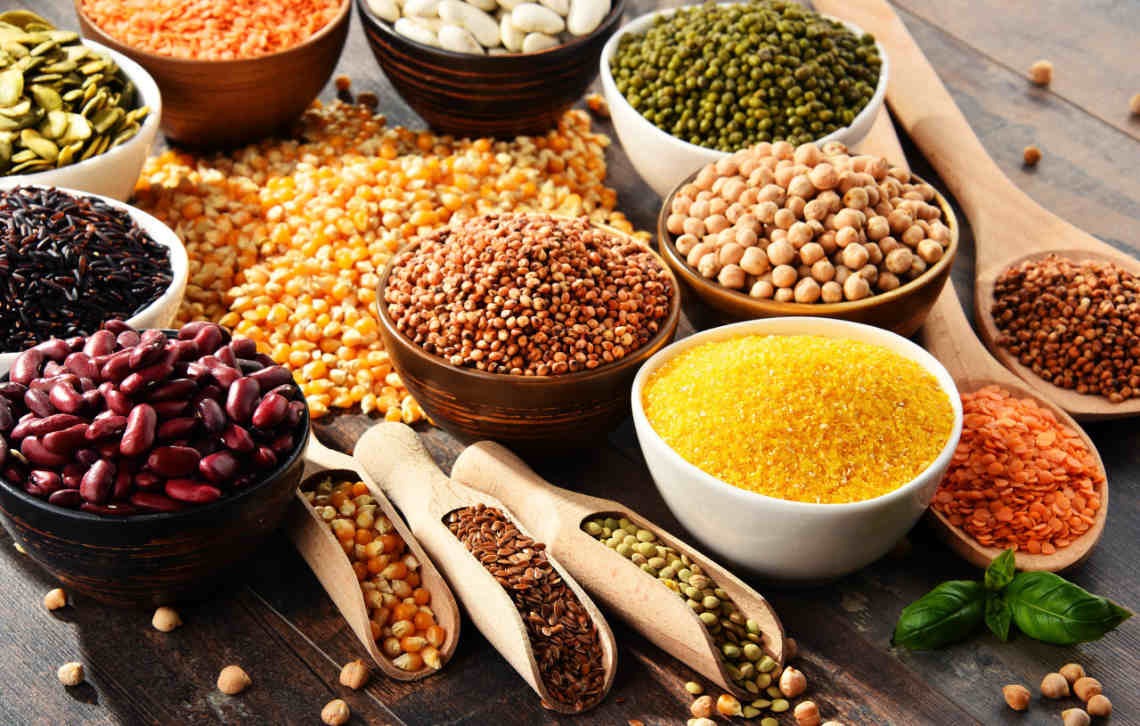Introduction:
Grains are a staple in many diets around the world, but they can be high in carbohydrates, which may not align with a low carb eating plan. However, there are several low carb grain alternatives available that can be incorporated into a low carb lifestyle. In this comprehensive guide, we will explore nine low carb grains that can provide variety, flavor, and nutrition to your meals. Additionally, we will highlight some high carb grains that should be avoided if you are following a low carb diet.
Quinoa:
Quinoa is a highly nutritious, protein-rich grain that is naturally gluten-free. It contains all nine essential amino acids and is a good source of fiber, iron, and magnesium. While quinoa is technically a seed, it is commonly used as a grain substitute. With approximately 20 grams of net carbs per cooked cup, quinoa can be enjoyed in moderation as part of a low carb diet.
Cauliflower Rice:
Cauliflower rice has gained popularity as a low carb alternative to traditional rice. Made by pulsing cauliflower florets in a food processor, cauliflower rice is low in calories and carbohydrates, making it an excellent choice for those following a low carb lifestyle. It can be used in various recipes, including stir-fries, salads, and grain-free sushi.
Chia Seeds:
Chia seeds are tiny seeds that are packed with nutrients and can be a great addition to a low carb diet. They are rich in omega-3 fatty acids, fiber, and antioxidants. Chia seeds absorb liquid and develop a gel-like consistency, making them suitable for creating puddings, adding to smoothies, or using as an egg substitute in baked goods.
Flaxseed:
Flaxseed is another low carb grain alternative that offers numerous health benefits. It is an excellent source of omega-3 fatty acids and fiber, which can promote heart health and aid in digestion. Ground flaxseed can be added to baked goods, oatmeal, or used as a coating for meats or vegetables.
Shirataki Noodles:
Shirataki noodles, also known as konjac noodles, are thin, translucent noodles made from the konjac plant’s root. These noodles are virtually calorie-free and contain almost no carbohydrates, making them an ideal choice for low carb diets. While they have a different texture compared to traditional wheat-based noodles, shirataki noodles can be a satisfying alternative in various pasta dishes.
Hemp Hearts:
Hemp hearts are the edible seeds of the hemp plant and are incredibly nutrient-dense. They are an excellent source of plant-based protein, healthy fats, and minerals. With minimal carbohydrates, hemp hearts can be sprinkled over salads, added to smoothies, or used as a topping for yogurt or low carb desserts.
Almond Flour:
Almond flour is made from blanched almonds that are ground into a fine powder. It is low in carbs, high in healthy fats, and provides a good amount of protein. Almond flour is a popular ingredient in low carb baking, allowing you to enjoy bread, muffins, and other baked goods while keeping your carbohydrate intake in check.
Coconut Flour:
Coconut flour is derived from dried coconut meat and is a versatile low carb grain substitute. It is high in fiber, protein, and healthy fats, making it a great addition to a low carb diet. Coconut flour absorbs a significant amount of liquid, so recipes often require less flour compared to traditional grain-based flours.
Buckwheat:
Despite its name, buckwheat is not related to wheat and is gluten-free. It is a highly nutritious grain alternative that contains essential amino acids, antioxidants, and minerals. Buckwheat can be used to make flour, which is suitable for pancakes, bread, and noodles. However, it’s important to note that buckwheat is higher in carbs compared to some other options on this list, so it should be consumed in moderation.
Grains to Avoid on a Low Carb Diet:
- Wheat: Wheat is a high carb grain commonly found in bread, pasta, and baked goods. It should be avoided or minimized in a low carb diet.
- Rice: Rice is a staple in many cuisines but is relatively high in carbohydrates. White rice, in particular, has a high glycemic index, which can cause a rapid spike in blood sugar levels.
- Corn: Corn is a starchy grain that contains a significant amount of carbohydrates. It is often used in processed foods and should be avoided on a low carb diet.
- Barley: Barley is a grain with a high carbohydrate content, making it unsuitable for low carb diets. It is commonly used in soups, stews, and as a side dish.
- Oats: While oats are a good source of fiber and can provide health benefits, they are higher in carbohydrates compared to other low carb grain alternatives. If consumed, it should be in moderation.
Conclusion:
Incorporating low carb grain alternatives into your diet can provide variety and nutritional benefits while maintaining a low carbohydrate intake. Experimenting with these nine low carb grains, such as quinoa, cauliflower rice, chia seeds, and almond flour, can help you create delicious and satisfying meals that align with your low carb lifestyle. Remember to avoid high carb grains like wheat, rice, corn, and barley, as they can hinder your progress on a low carb diet.
- Discovering CBD Bliss: A Fun Dive into JustCBD UK’s Topicals! - October 7, 2024
- Vaporizers By One Stoppipe Shop-The Ultimate Vaporizer Guide Comprehensive Review - February 28, 2024
- How to Use THC-P Products - July 20, 2023

